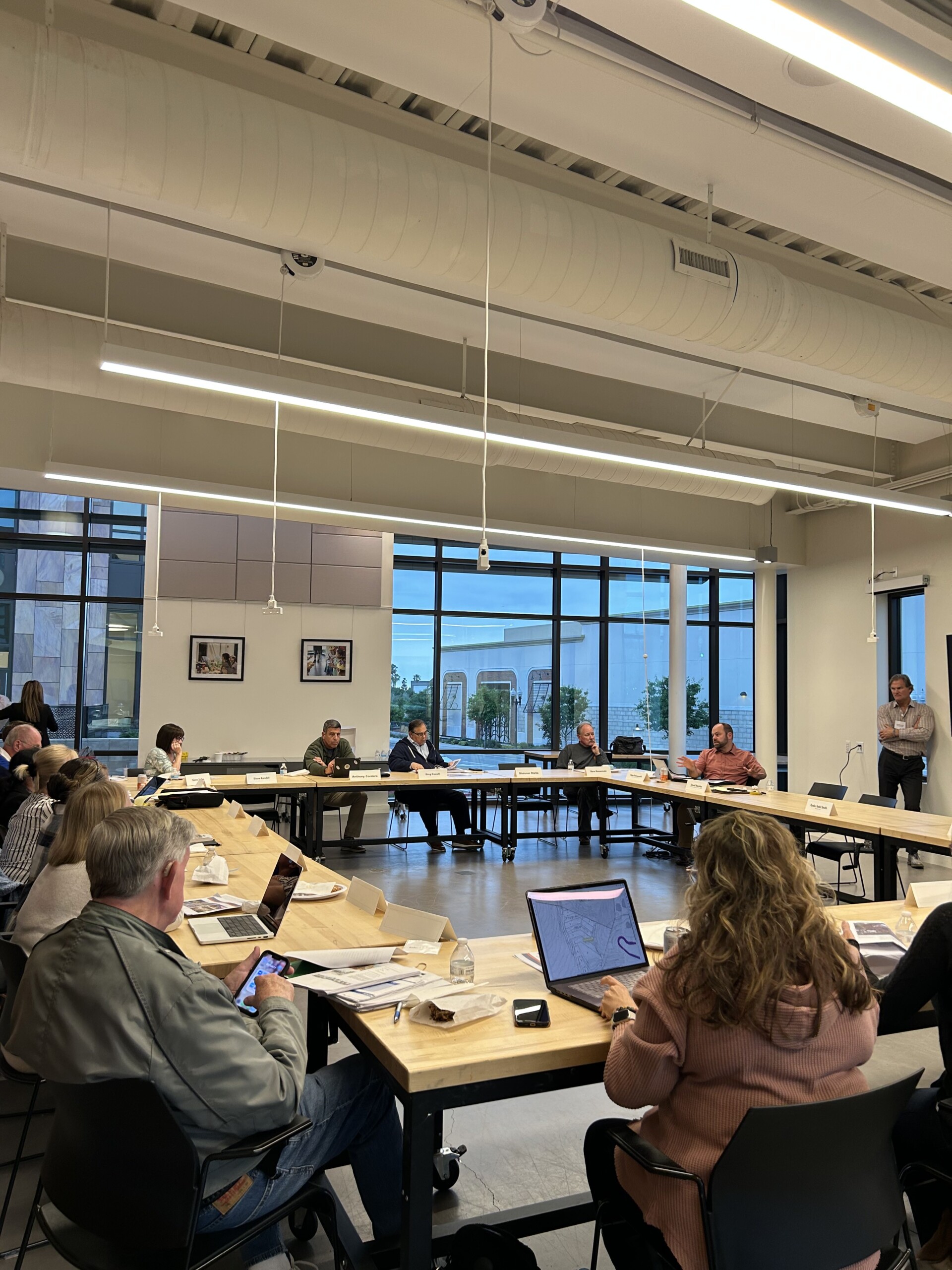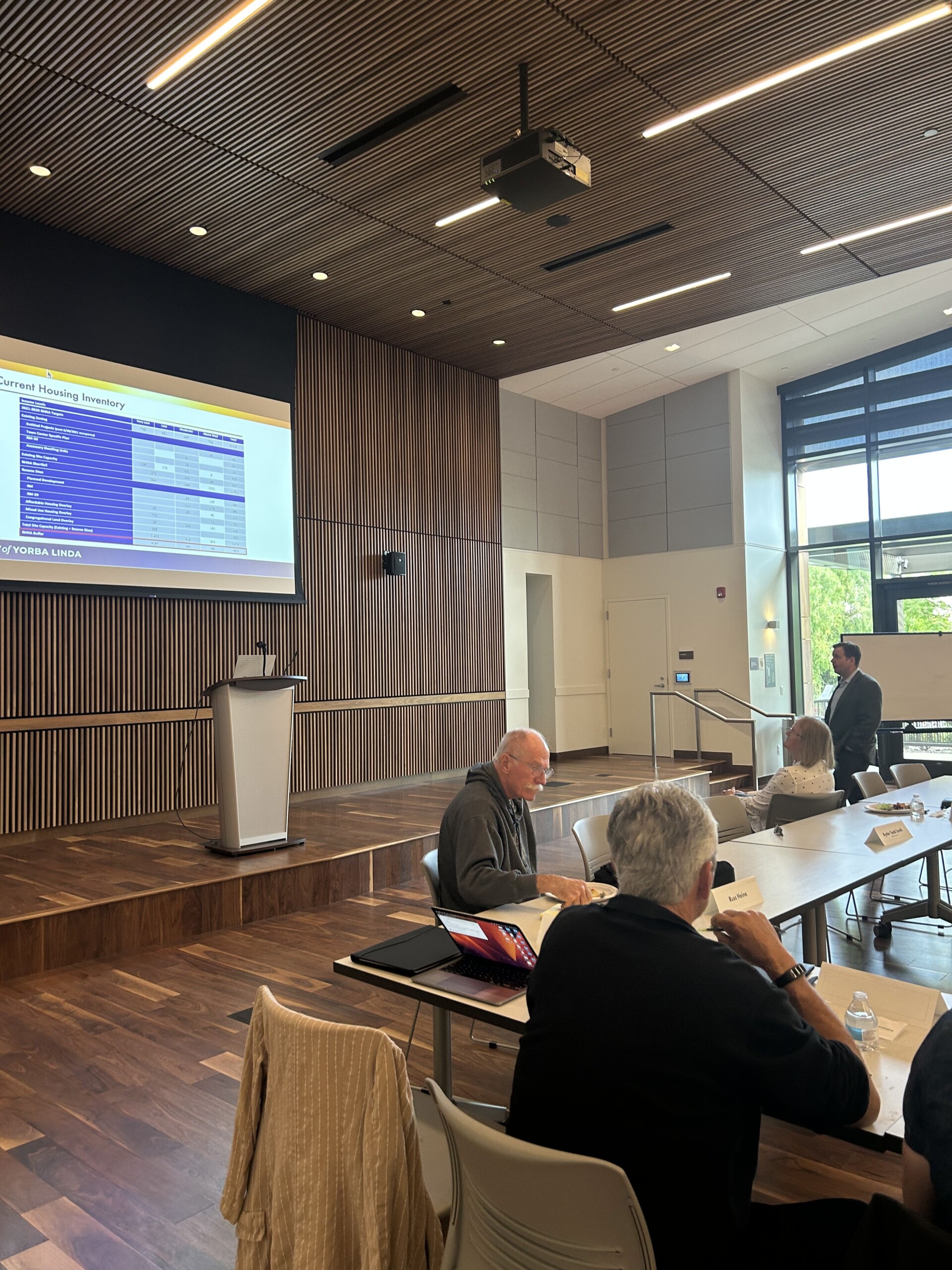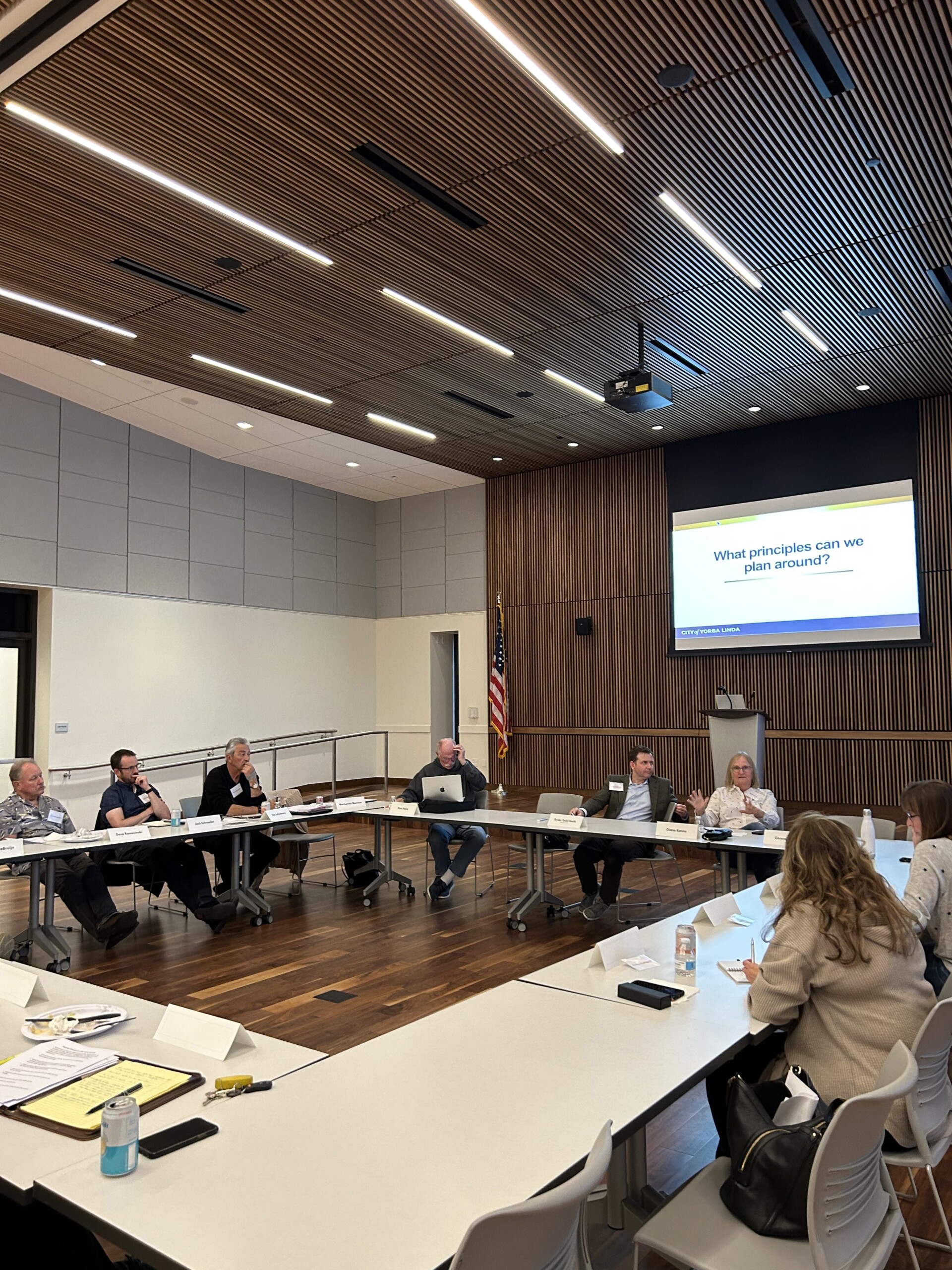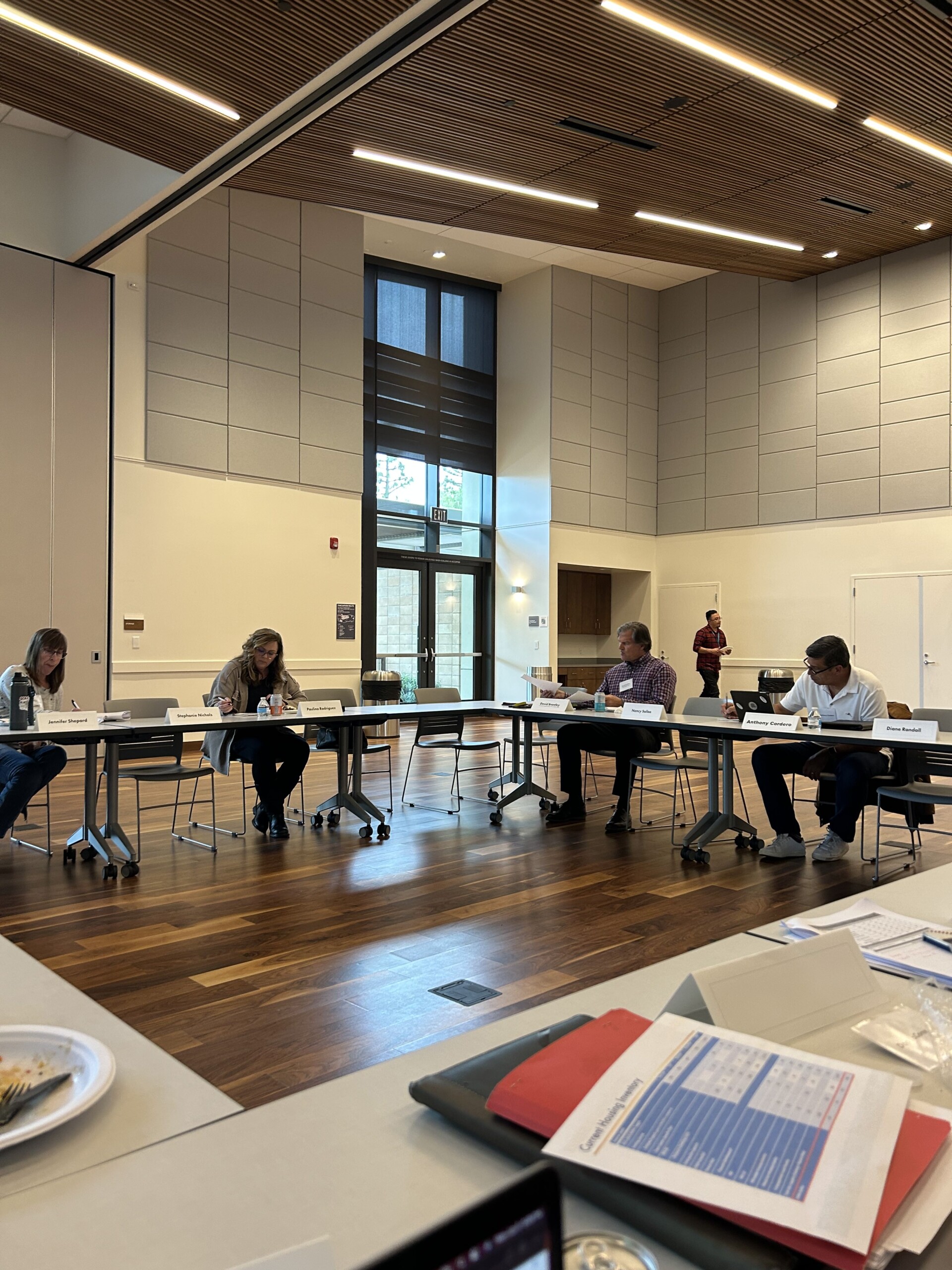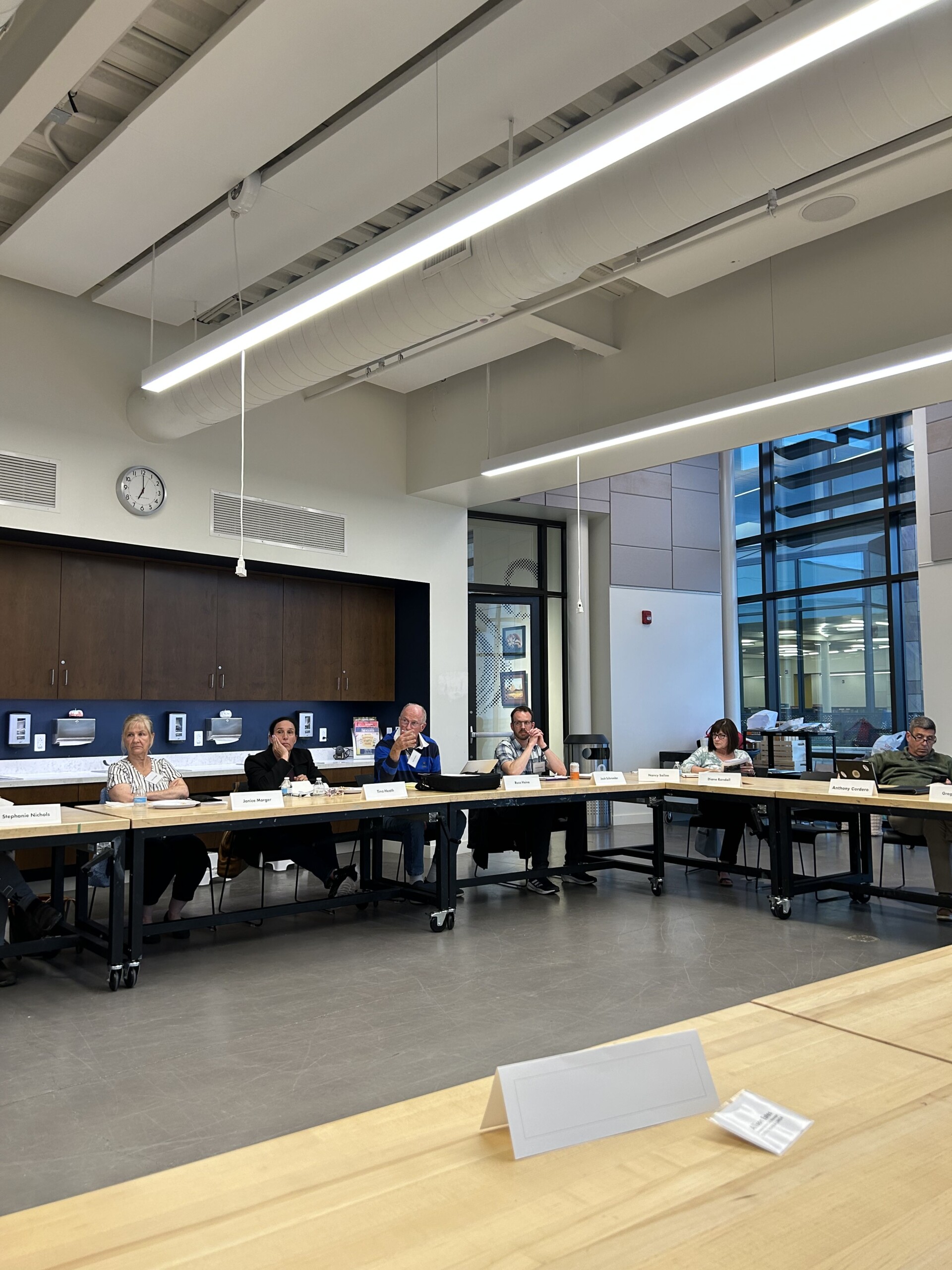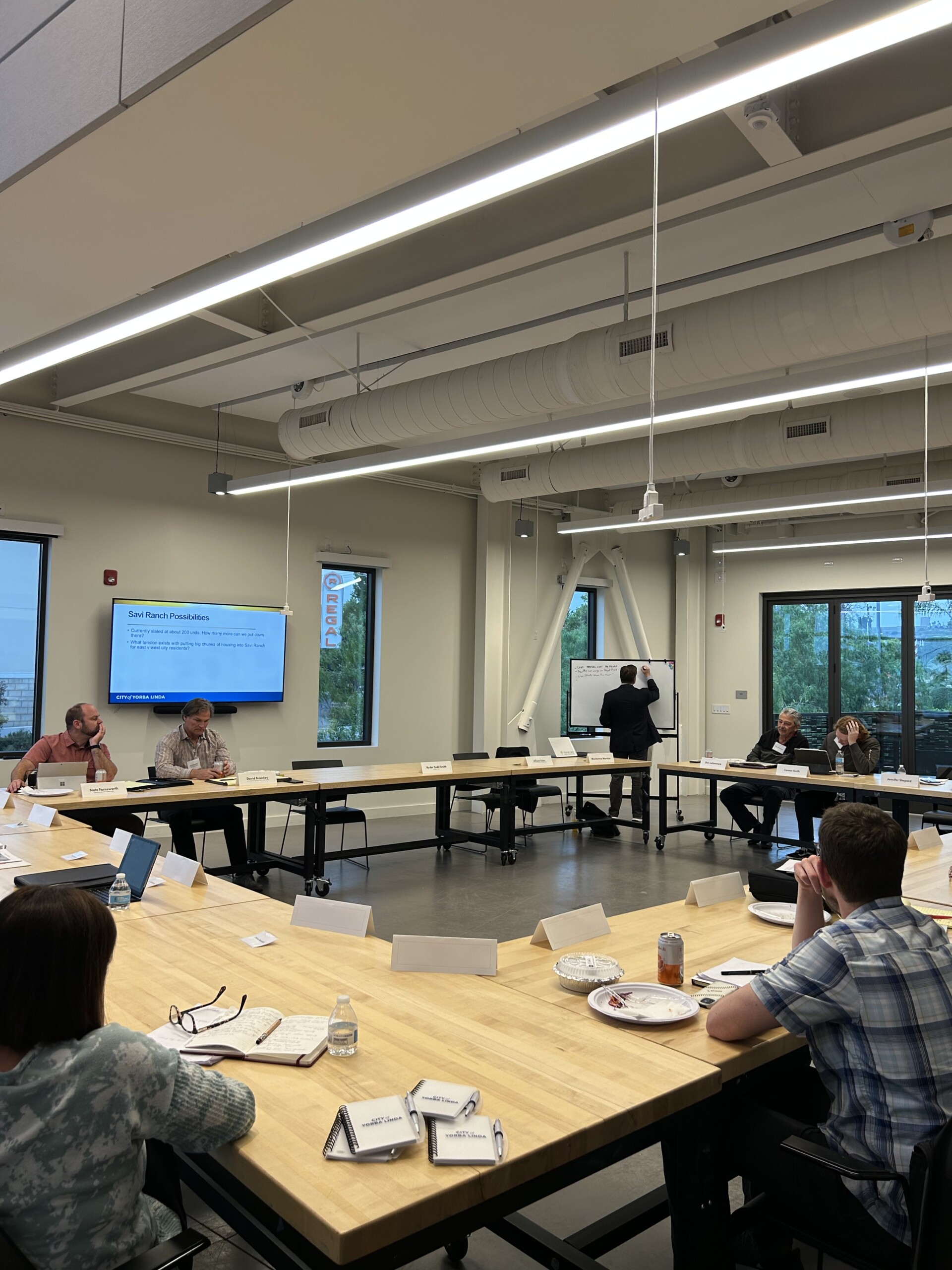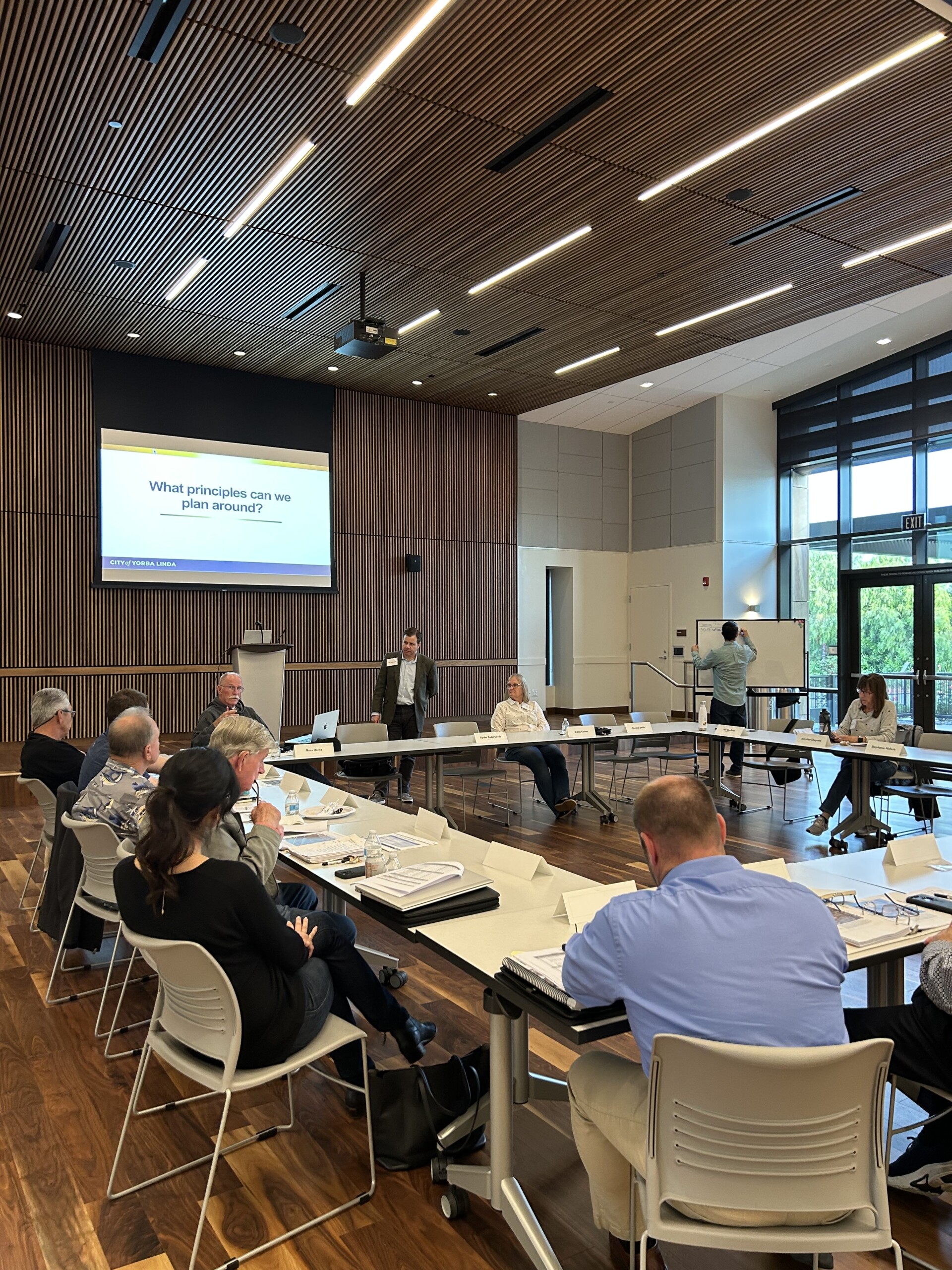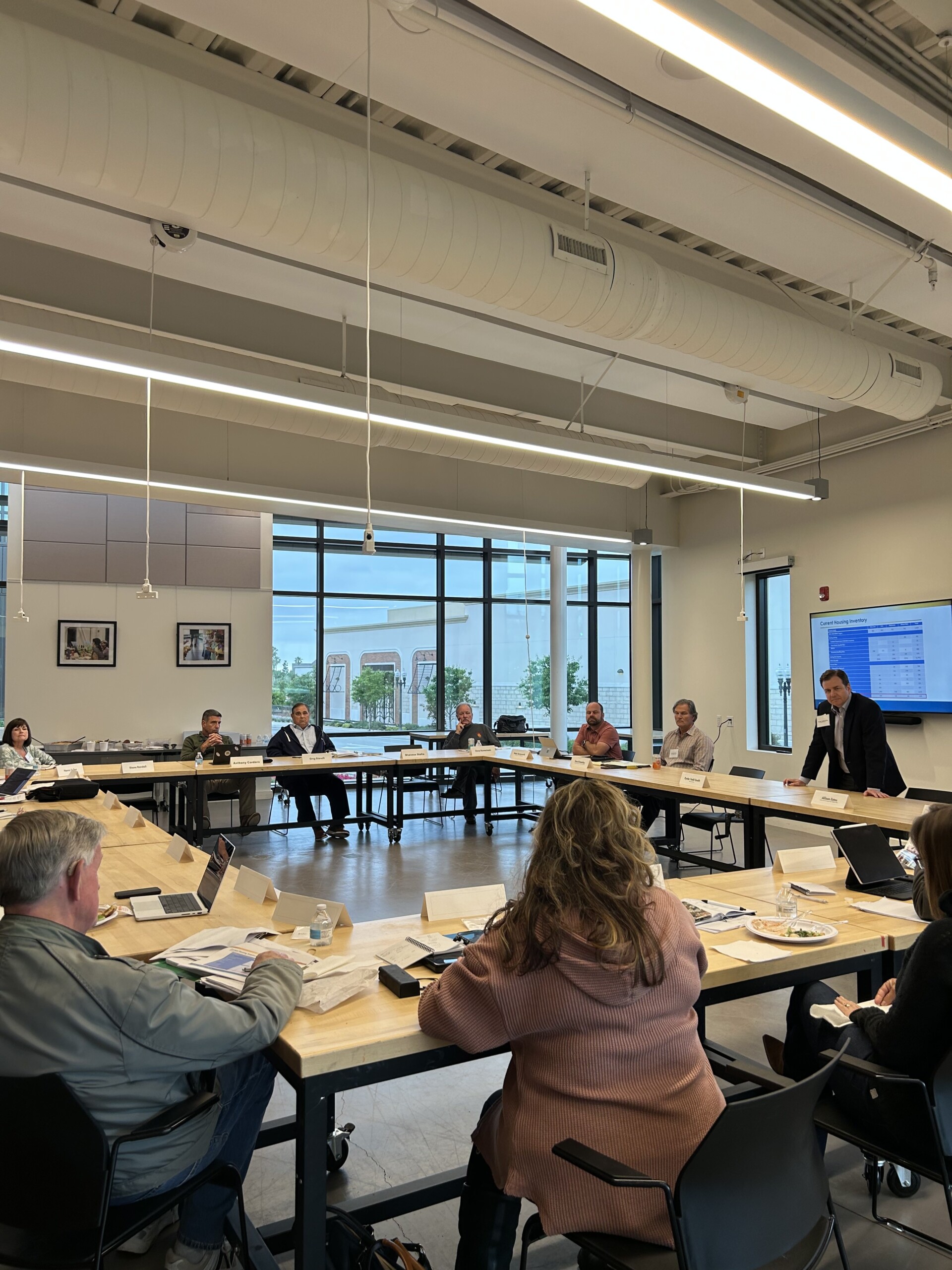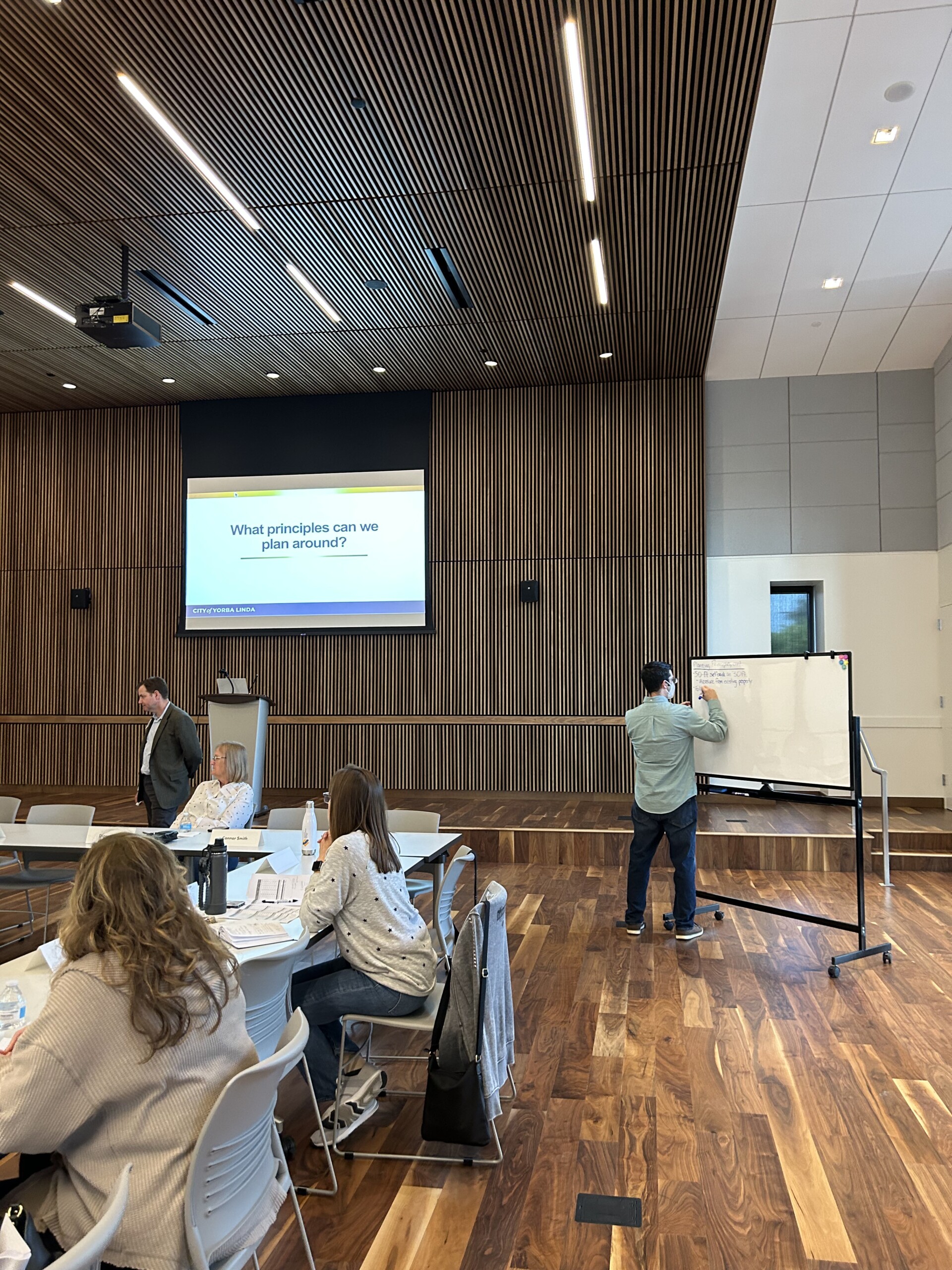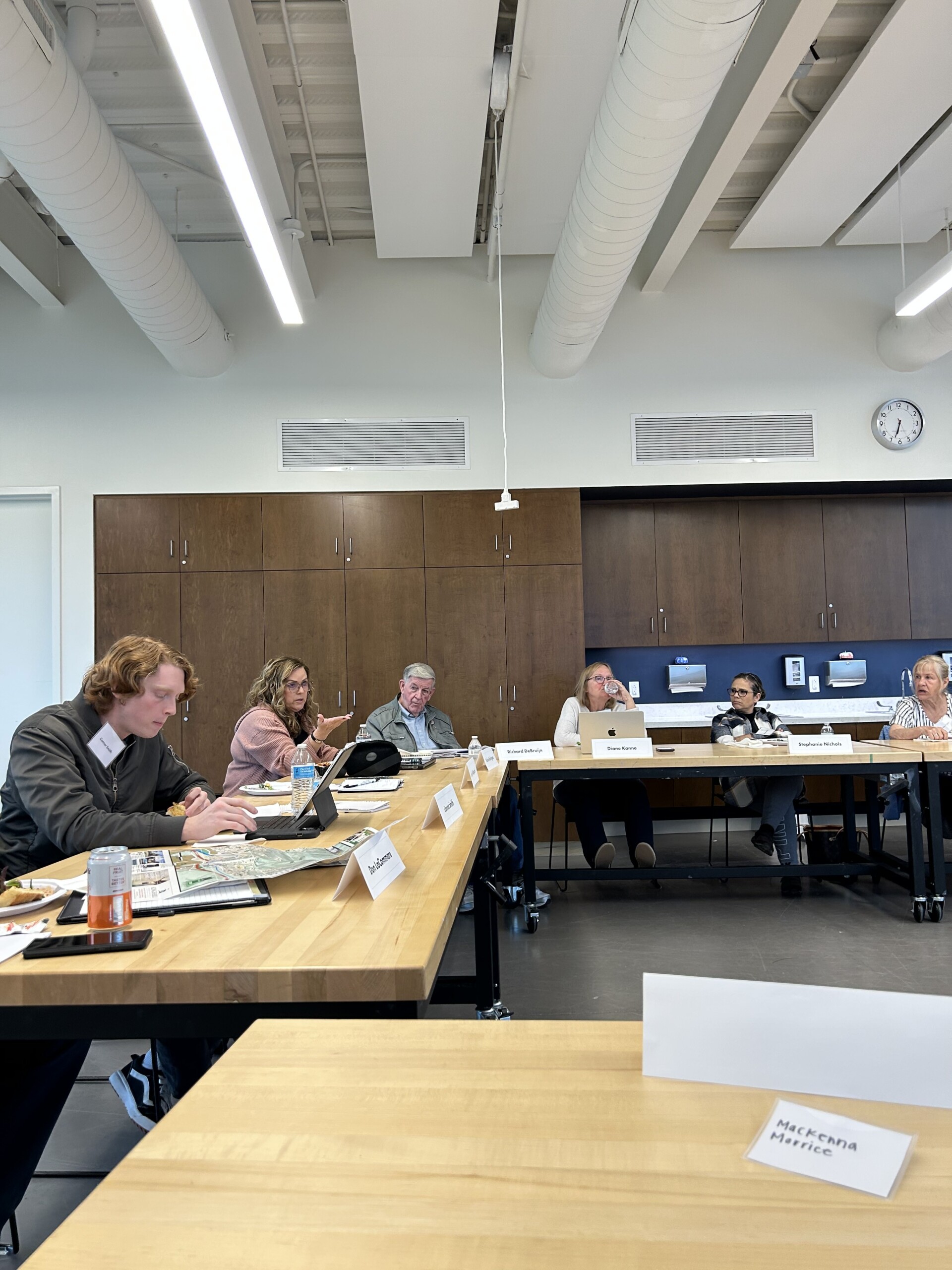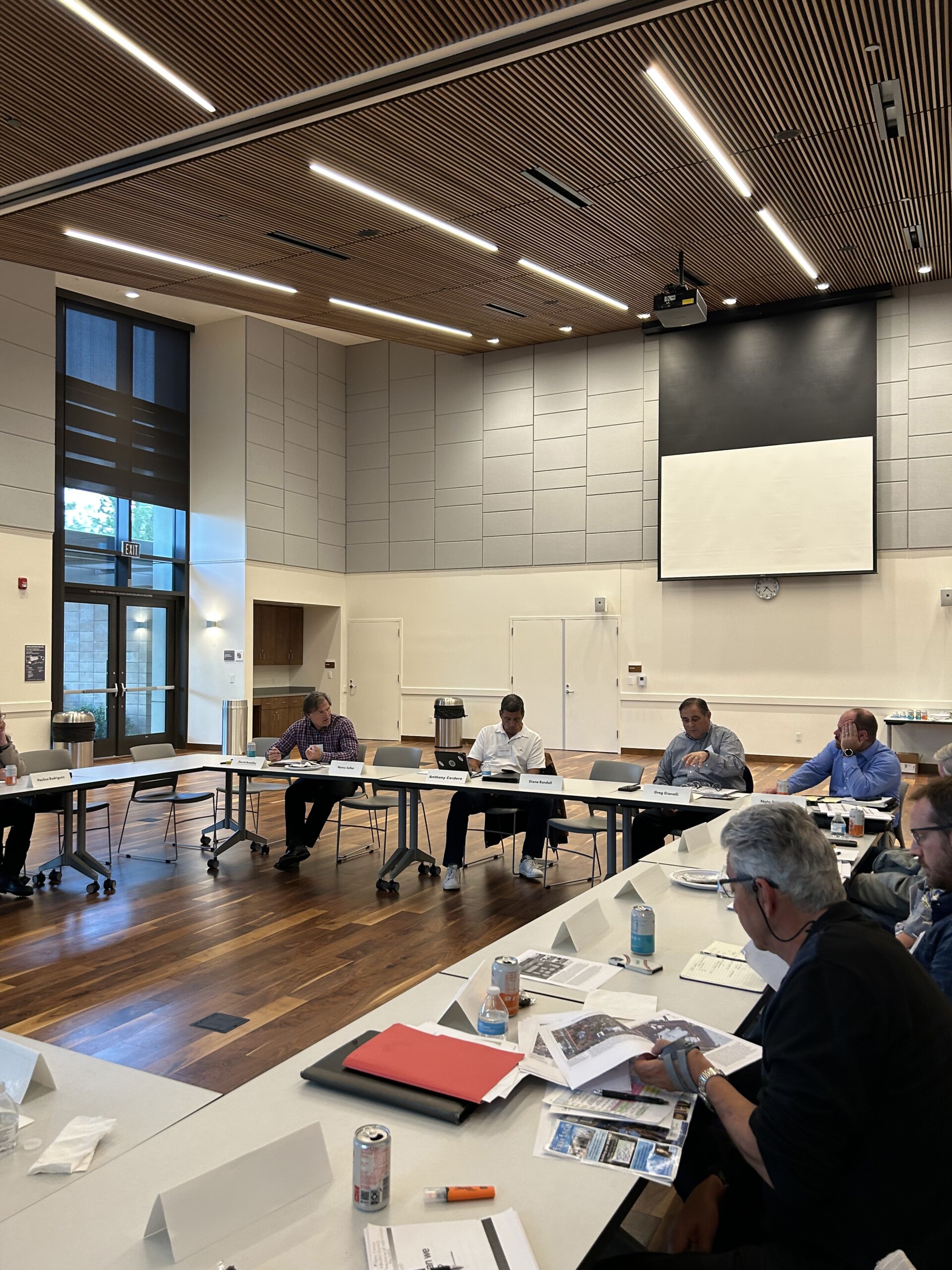In an effort to evaluate next steps and to expand overall resident engagement on this important and complex policy issue, the City determined that a robust and extended dive into housing policy with a broad swath of residents would be helpful. The idea was to talk directly with residents about the background, policy choices and tradeoffs of land use policy, and to listen deeply to their ideas and suggestions for how to best address land use in the future of Yorba Linda. Additionally, the hope was to start with a group of these residents who were willing to dedicate several hours to the discussion and learning in order to gather effective feedback that recognized the policy challenges in addition to general resident sentiment.
Members of the Working Group were identified by City Staff and approached to join the effort using the following criteria:
- The resident had expressed previous interest in Housing Issues
- The final group would represent all points of view on housing while being solutions-oriented
- That membership would have people who were geographically distributed throughout the City
- That there were a mix of demographics in terms of age, gender and socio-economics
- That no prior or current elected/appointed officials were included in the Working Group
The City Council gave no mandate for the outcome of the Working Group. The only direction was that City Staff and City Consultants would facilitate meetings of this group, bring the group information, answer their questions and offer suggestions on possible approaches, tradeoffs and direction for the Working Group to consider.
The following residents volunteered their time and insights to engage in a robust resident-driven discussion about housing policy in Yorba Linda. The City Council has expressed their appreciation for giving their time to help the City navigate this challenging matter and appreciates their work.
- Tony Cordero
- Richard DeBruijn
- Greg Gianelli
- Tina Heath
- Russ Heine
- Diane Kanne
- Don LaCommare
- Janice Morger
- Stephanie Nichols
- Dave Ramocinski
- Diane Randall
- Paulina Rodriguez
- Nancy Sallee
- Josh Schroeder
- Jennifer Shepard
- Connor Smith
- Shannon Stella
Findings and Recommendations
The Working Group came to a conclusion about key observations and suggestions. Through unanimous consent, they agreed on the following six suggestions for the City Council to consider as it advances a new Housing Element approach for the City.
- Retaining local control with a November 2024 ballot vote is important.
- The City should pursue a November 2024 ballot measure to adopt zoning changes, and residents should seriously weigh the consequences if that ballot measure fails.
- The City should deploy more tools to connect with residents on the need for adopting a Housing Element and perform the education necessary to ensure the public is informed on this complex subject. This may include engaging additional consulting resources to supplement the City’s outreach efforts for this acute need.
- A resident survey on housing issues could better inform the City’s engagement efforts and should be pursued.
- The City should leverage Savi Ranch (to a reasonable extent) to create a new residential and mixed-use Downtown-like space for Yorba Linda.
The Savi Ranch finding was the subject of a robust discussion among the group, who made the following four specific recommendations:
- Increase the allocation of units in Savi Ranch from 200 to no more than 800 housing units.
- Increase a Savi Ranch allowable density to 50 dwelling units per acre with a five story height limit.
- Reduce the zoning density in three sites commonly known as Christmas Tree, Fairmont and Bryant Ranch to 10 dwelling units per acre – a reduction in density by more than 50% for those areas. Additionally, RM-10 has a two-story height limit. This shift also creates a more event distribution of units across the City.
- Leave all other zoning unchanged, including the Congregational Overlay District.
This shift to a large increase in unit allocation to Savi Ranch was rooted in the following general concepts that the Working Group discussed:
- More density in Savi Ranch could help revitalize that area of town, as it appears retail establishments are struggling to survive and some areas of Savi Ranch clearly warrant new investment.
- Savi Ranch density is not adjacent to any existing single-family homes and, thus, reduces concerns about adjacency between high-density housing and single-family residences.
- Working Group members are excited at the possibility of a “Downtown” experience with mixed-use integrated into Savi Ranch, creating a retail and residence district that is similar to such developments in Anaheim, Brea, Fullerton and Westminster.
- While the reduction in density was dramatic for three areas, the plan still reflected that those areas “did their fair share,” and each area took on some responsibility for providing housing units.
- There was a general sentiment among the Working Group that no more than 800 units represented a reasonable number to place in Savi Ranch, while respecting that housing needed to go in several other spots in the City and those areas should still take on units. The group felt it would have been unfair to the Savi Ranch area to have put more units in that location. Additional concerns were noted by City Staff that too many units being pushed into Savi Ranch might trigger or compliance and regulator concerns from HCD staff.
- Finally, it was noted that traffic concerns in Savi Ranch are an issue. While the City is already in the design phase on improvements in that area that will help with traffic, it was noted this increase in units likely will return the traffic conditions back to similar to what they are, as of June 2023. This conclusion, however, is pending analysis from a traffic engineering firm.
As a consequence of the Savi Ranch reallocation of units and reduced density on three other major areas, the net result was a balanced RHNA allocation plan that both met the income bracket requirements for housing viability while also meeting the total unit threshold required by the State. That said, this new approach is subject to the State of California, Housing and Community Development Department (HCD) review and approval. It is entirely possible that HCD may reject this plan and a modified approach will be required.
(Note: This is a 275 page report and may take a moment to load.)
Report on the Activity and Findings of the Yorba Linda Housing Policy Resident Working Group
(Note: This is a 275 page report and may take a moment to load.)
Yorba Linda Housing with PDFs_FINAL
